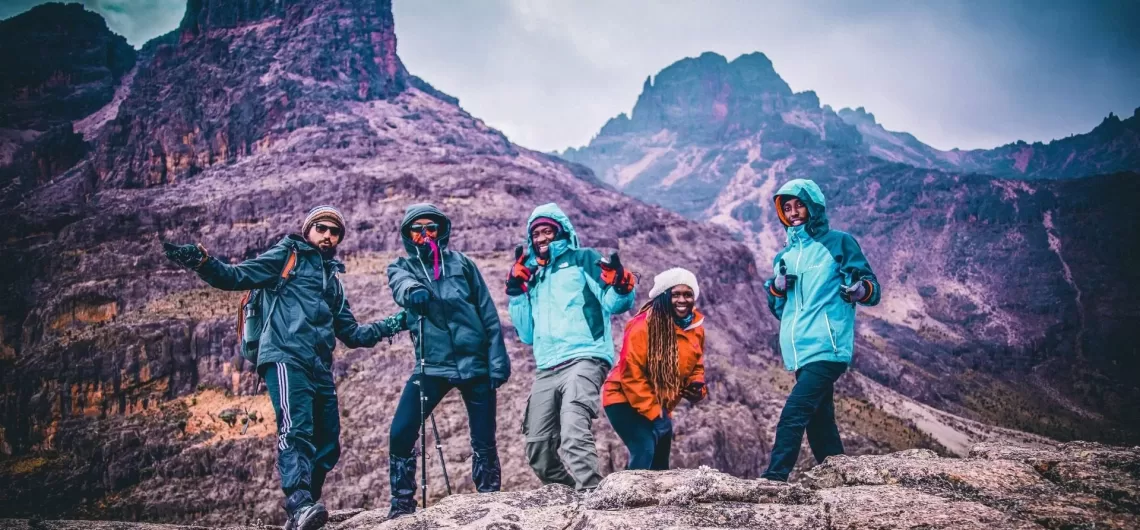Climbing Mt Kenya is a thrilling and challenging adventure that attracts many outdoor enthusiasts from around the world. Here are some key facts, routes, and charges for climbing Mt. Kenya:

Facts:
- Mt. Kenya is the second-highest mountain in Africa, after Kilimanjaro, with its highest peak, Batian, standing at 5,199 meters (17,057 feet).
- Mt. Kenya is a stratovolcano, and its last eruption occurred about 3 million years ago.
- Mt. Kenya is a UNESCO World Heritage Site and a protected area in Kenya, with diverse flora and fauna, including rare and endangered species such as the Mount Kenya bush viper and the Mount Kenya mole-rat.
Mt Kenya Routes:
There are several routes to climb Mt. Kenya, ranging from easy to difficult, and the choice of route depends on one’s fitness level, climbing experience, and personal preference. Some of the popular routes include:
This is the easiest and most scenic route, and it starts from the northwest side of the mountain. It takes about 4-5 days to climb and is ideal for beginners.
Chogoria Route
This is the most scenic and beautiful route, and it starts from the east side of the mountain. It takes about 5-6 days to climb and requires some technical skills.
Naro Moru Route
This is the shortest and most popular route, and it starts from the west side of the mountain. It takes about 3-4 days to climb, but it is steep and requires a good level of fitness.
Burguret Route
This is the least used and most challenging route, and it starts from the north side of the mountain. It takes about 6-7 days to climb and requires a high level of fitness and mountaineering experience.
Charges:
Climbing Mt. Kenya requires a permit, which can be obtained from the Kenya Wildlife Service (KWS) or authorized tour operators. The permit fees vary depending on the route and the number of days. Here are some approximate charges:
- Sirimon Route: $220 for non-residents, KES 5,500 for Kenyan residents, and KES 1,500 for East African residents.
- Chogoria Route: $280 for non-residents, KES 6,500 for Kenyan residents, and KES 1,800 for East African residents.
- Naro Moru Route: $200 for non-residents, KES 4,500 for Kenyan residents, and KES 1,200 for East African residents.
- Burguret Route: $300 for non-residents, KES 6,500 for Kenyan residents, and KES 1,800 for East African residents.
In addition to the permit fees, climbers also need to pay for other expenses, such as park fees, camping fees, guide and porter fees, and transportation costs.
Best time to climb Mt Kenya
The best time to climb Mount Kenya is during the dry season, which is typically from January to March and from July to October. During this period, the weather is generally clear and dry, with lower chances of rain, and the trails are less muddy and easier to hike. The temperatures during the day are mild, usually ranging from 10 to 20 degrees Celsius (50 to 68 degrees Fahrenheit), while at night, they can drop below freezing, especially at higher altitudes.
